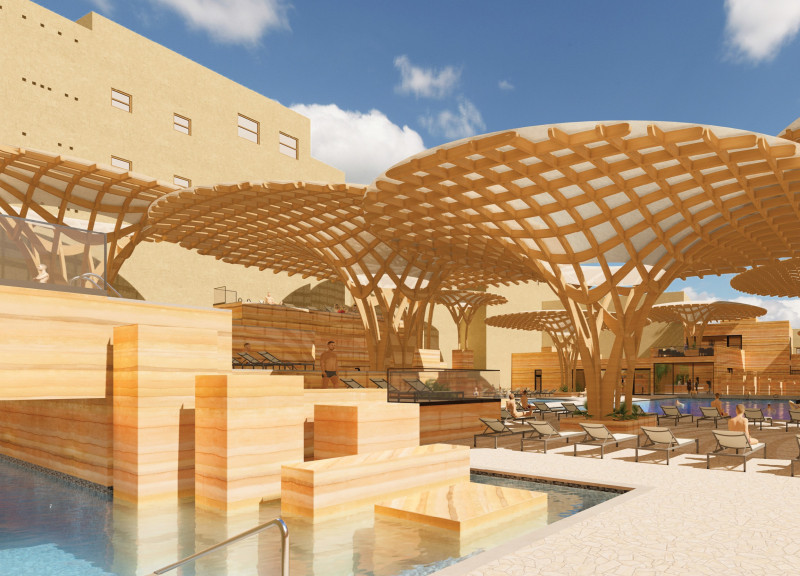5 key facts about this project
At first glance, the architecture reveals a balanced composition of rigid forms and organic lines, showcasing a blend of modern aesthetics with elements reminiscent of the local heritage. The façade, replete with large glass panels, allows natural light to penetrate deep into the interior, creating a bright and inviting atmosphere while establishing a visual connection between indoor and outdoor spaces. This design approach serves not only to enhance user experience but also to promote a sense of openness and accessibility.
Key elements of the project include its strategic layout, which separates private and communal areas. The design incorporates versatile spaces that can be easily adapted to different functions, whether for collaborative work, social gatherings, or public events. This flexibility is a core aspect of the project, demonstrating a commitment to creating environments that respond to the varying needs of its users. The inclusion of green spaces, such as landscaped terraces and community gardens, further enhances the functionality, offering areas for relaxation and informal gatherings amidst the urban landscape.
The materiality of the building plays a significant role in both its aesthetic appeal and environmental impact. The use of sustainable materials, such as responsibly sourced wood and recycled concrete, reflects a dedication to reducing the carbon footprint of the construction. Additionally, these materials contribute to a tactile quality that invites interaction, helping to create a warm and welcoming ambiance. The architectural design employs an efficient insulation system that not only regulates the internal climate but also minimizes energy consumption, aligning with contemporary sustainability practices.
What sets this project apart is its focus on innovative design approaches. It incorporates advanced technology to enhance building performance and user experience, integrating smart systems that allow for responsive adjustments to environmental conditions. These systems work unobtrusively to provide heating, cooling, and lighting tailored to the needs of occupants, demonstrating a forward-thinking approach to architectural design.
Furthermore, the project reflects a deep understanding of the local cultural context. The design elements resonate with the community’s history and identity, fostering a sense of belonging among users. Artistic features inspired by local craftsmanship adorn the building, subtly linking it to the cultural narrative of the area. This consideration of local identity not only enhances the architectural integrity but also promotes a pride of place among community members.
This architectural design is an exemplary case study for modern sustainable practices within urban environments. Each aspect of the building—from its layout and material choices to its integration of technology—demonstrates a meticulous approach to creating spaces that serve and uplift the community. For those looking to delve deeper into the project, exploring architectural plans, sections, and designs may provide valuable insights into the innovative concepts and practical solutions that characterize this architectural endeavor. By examining these elements, one can appreciate the thoughtful interplay of form, function, and sustainable design that defines this project.























